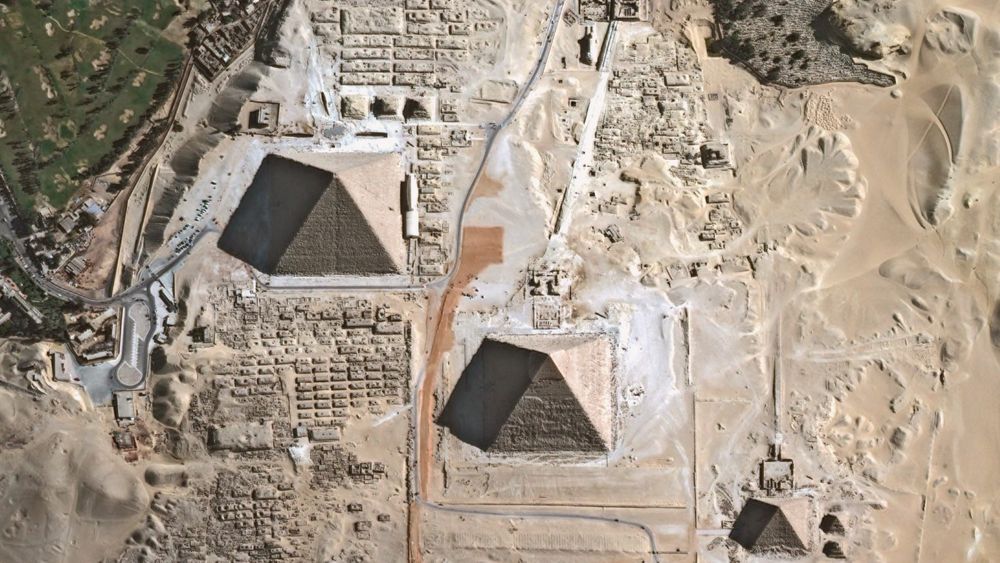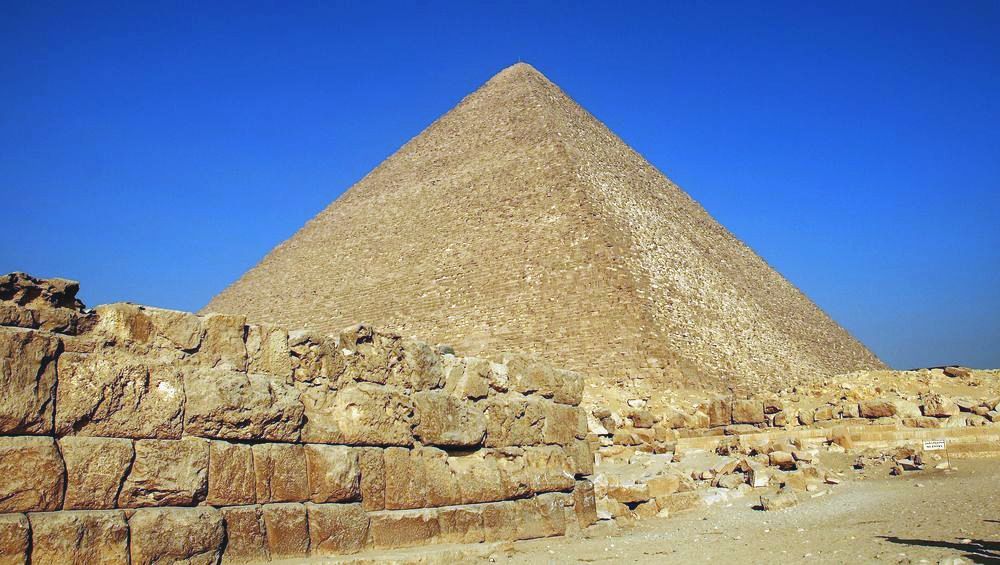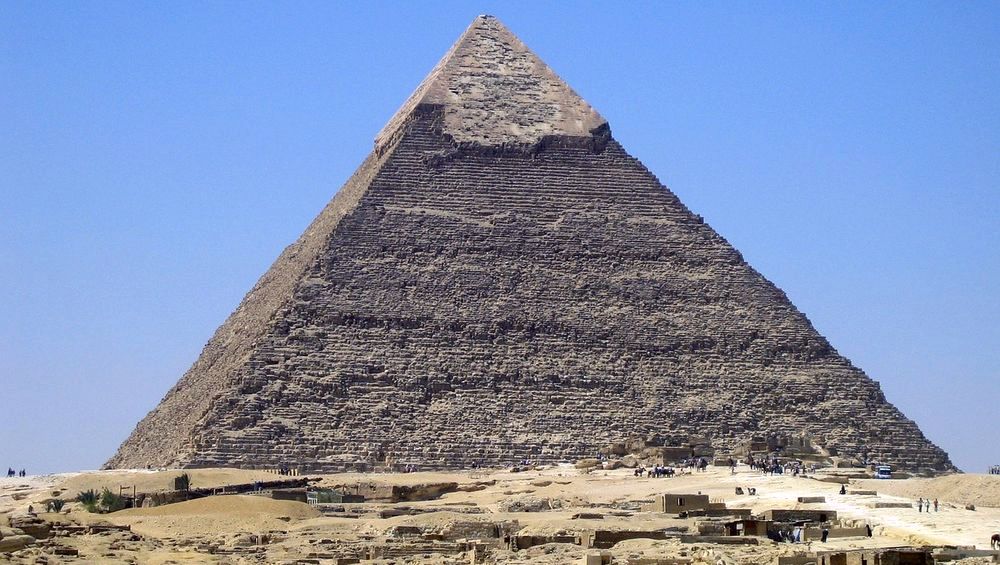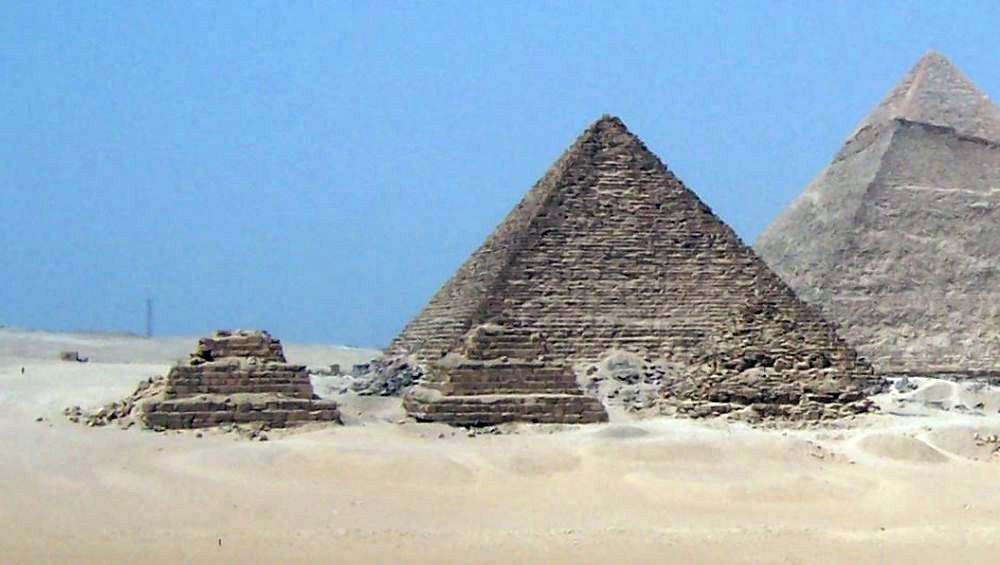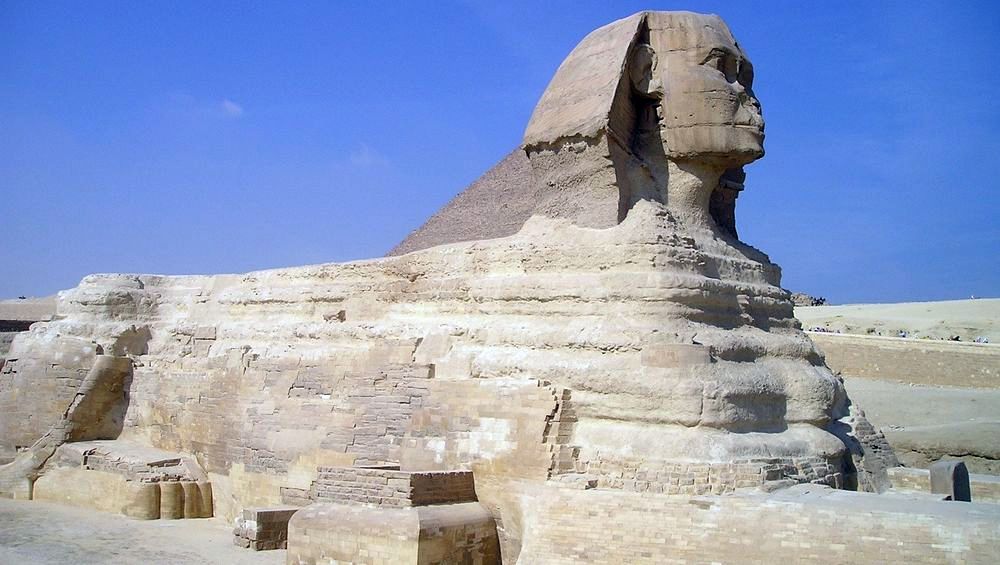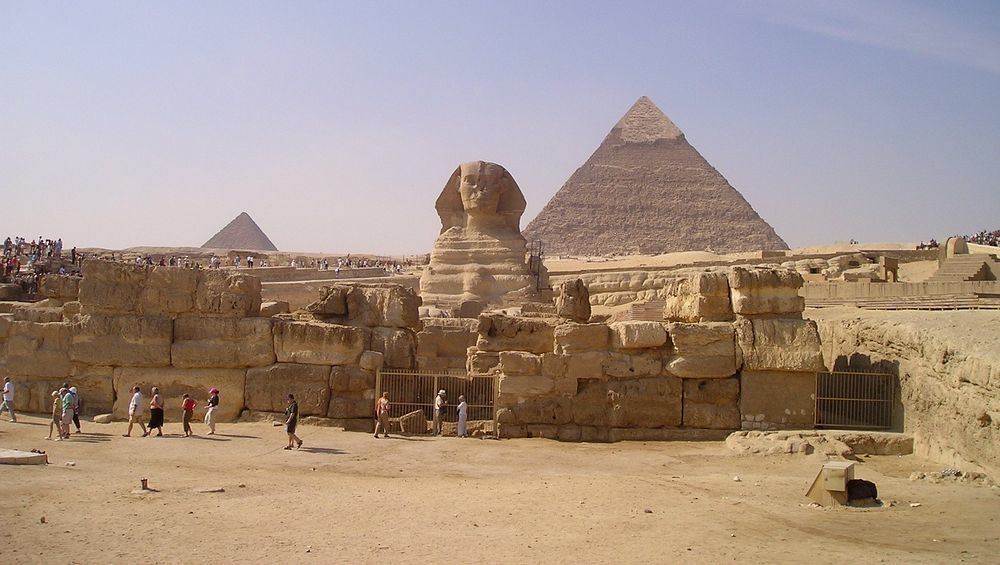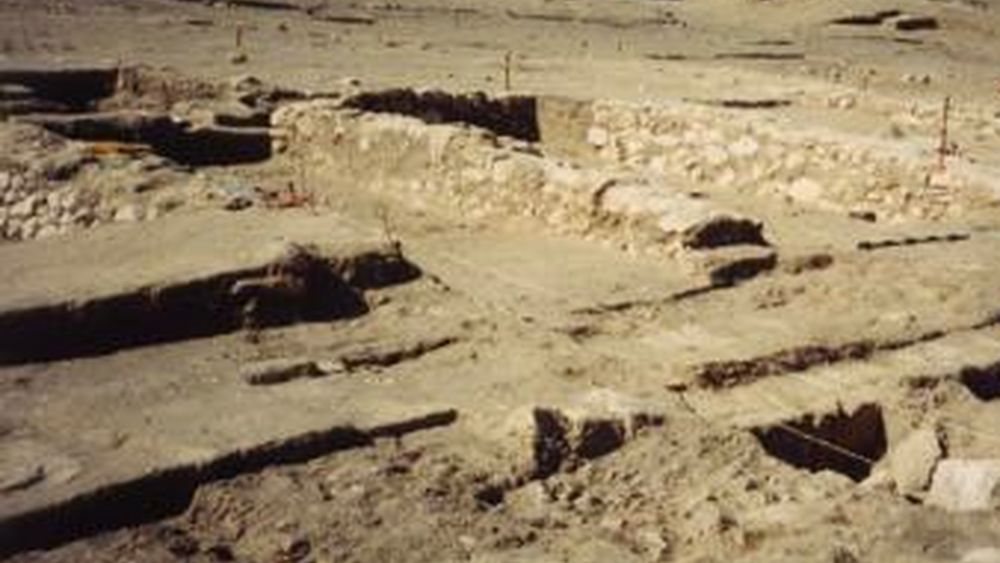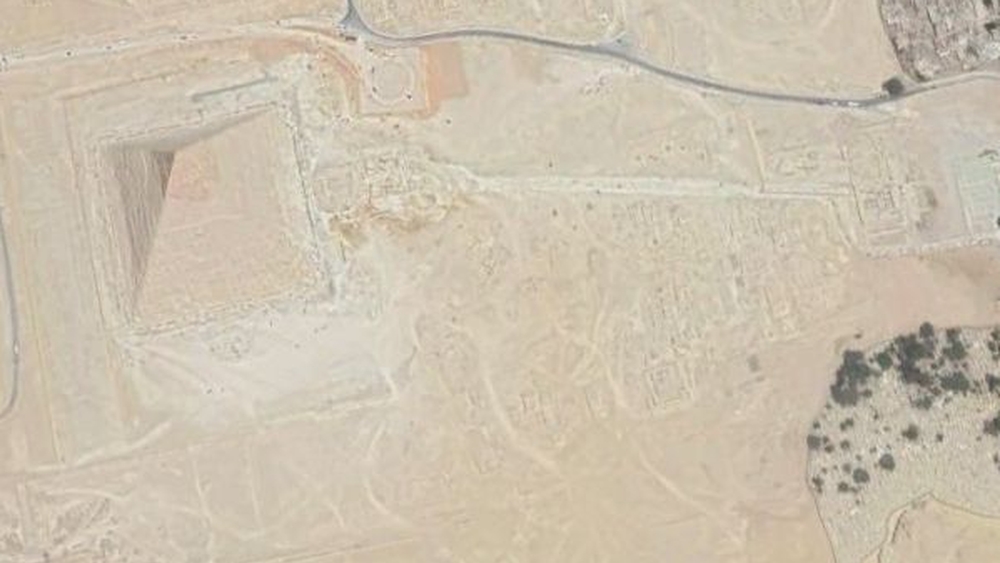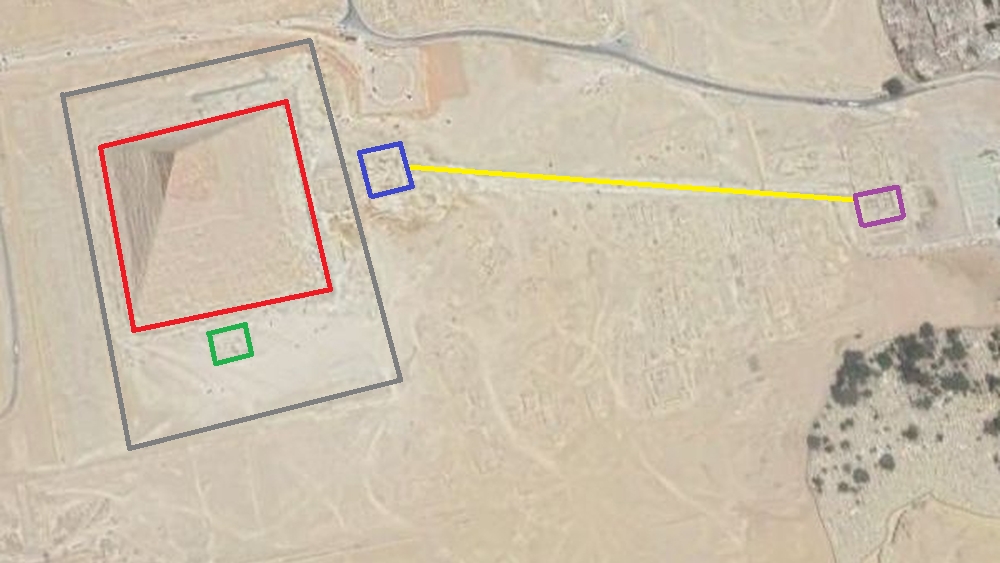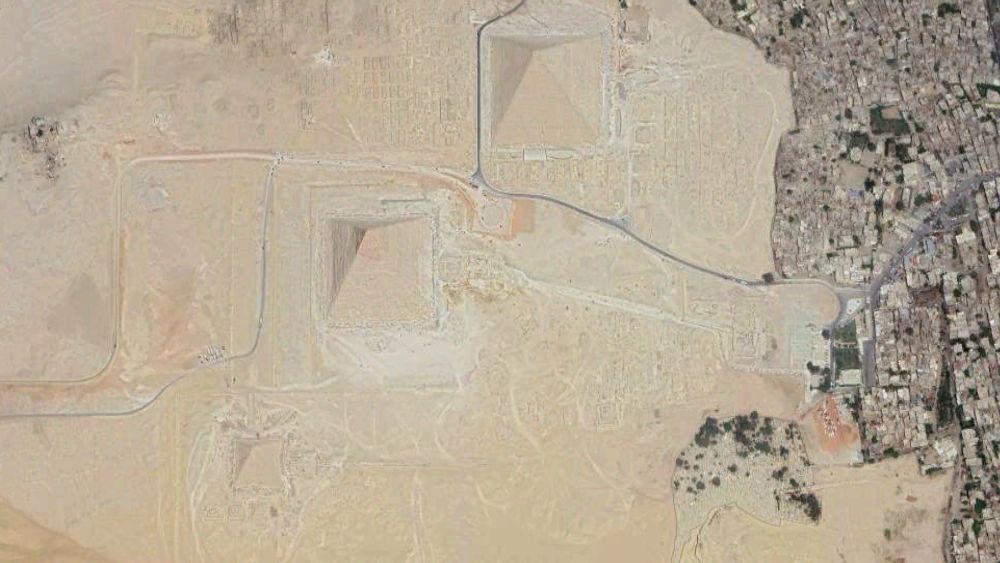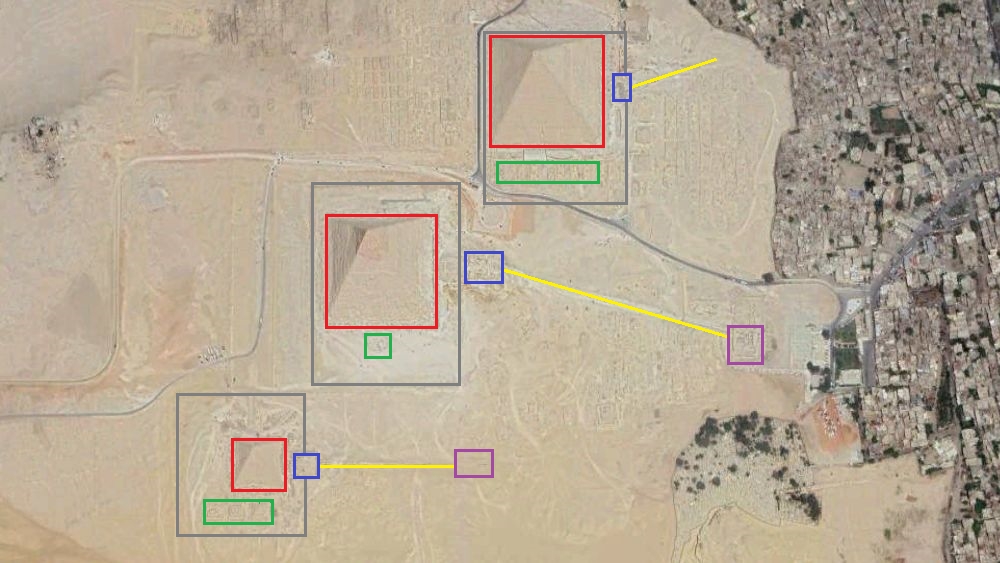A necropolis is a large geography area containing several groups of monumental burials. The word comes from the ancient Greek nekro and polis, literally "city of the dead". We usually speak of necropolis for ancient civilizations.
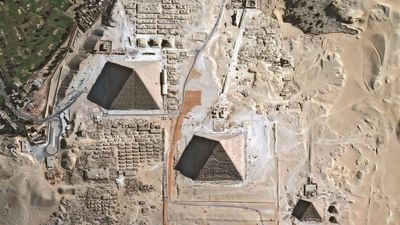
The Giza Necropolis
There are many necropolises on the planet, for example under the Greek Empire, Roman or during the golden ages of Inca or Chinese civilizations. One of the characteristics of the necropolises of ancient Egypt is their use during a given dynasty. Thus every dynasty creates a necropolis, at least during the Old Empire, without any systematic character. Several rulers of a dynasty were exceptions, just as many dynasties used the same necropolis, but it is rather rare.
The pharaohs of the 1st and 2nd Dynasty were buried at the necropolis of Umm al-Qa'ab in Abydos. Those of the Third Dynasty were rather at Saqqara, and those of the Fourth Dynasty at Giza. The Pharaohs of the 5th and 6th Dynasty were buried in Abousir, north of Saqqara. But as said before, there is no rule, the necropolis of Saqqara having been used since the first dynasty and throughout the old empire.
Graves and other places of interest in Giza
Geographic location
The Giza Necropolis occupies much of the Giza Plateau, 25Kms south of Cairo, the Egyptian capital. Giza is the name of this suburban city where the plateau is located. He is on the left bank of the Nile.
In aerial view it seems that only the northern part of the plateau is occupied by old buildings, but in fact it is false, it is an impression due to the gigantism of the three pyramids. Graves have been found further to the west, and the updated village of workers and their cemeteries extends the necropolis much further south than it seems.
Learn more about location of the necropolis.
How is it organized?
The necropolis is relatively simple when viewed from a height. It consists of the tomb of Khufu, the northernmost, that of Khafra, intermediate, and southernmost is that of Menkaure. Southeast of these last two tombs are the village of workers, it is the village where the workers lived. This village did not appear until after the construction of the Great Pyramid, that of Khufu, although there probably was a habitat area previously, but it is with the beginning of the construction of the pyramid of Khafra a village was built here to house the workers of the site. It's four things, but this simplicity masks a much more complex organization.
Restricting to the use of the necropolis during its golden age, ie during the IVth Dynasty (around -2550 to -2450), we must detail these elements. You should know that each tomb is composed of:
- A pyramid serving as a tomb,
- A wall protecting the pyramid
- A temple high, next to the pyramid
- A covered pavement
- A low temple at the end of the road
- Annex pyramids
- One or more cemeteries
In addition, for the pyramid of Khufu and Khafra, pits that contained (or supposedly contained) a wooden funerary bark.
Below is an example of the best preserved Khafra funeral complex.
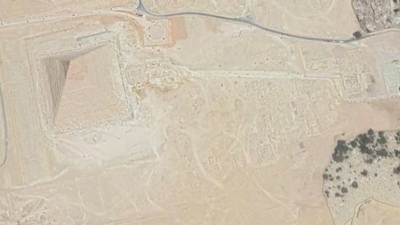
Khafra funeral complex
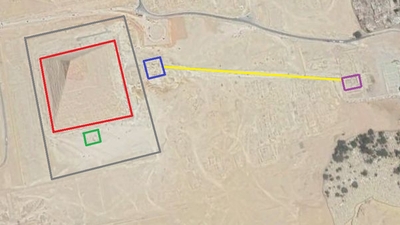
Khafra annotated Funeral Complex
The highlighting of the different elements of a funeral complex is obvious in the annotated image. It's exactly the same with Khufu and Menkaure, but each with its own particularities, of course. However, here are the three complexes in one scheme.
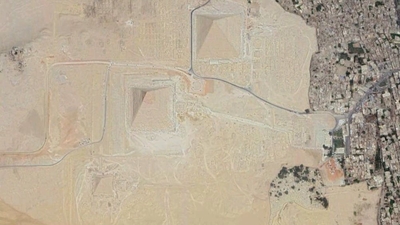
Khafra funeral complex
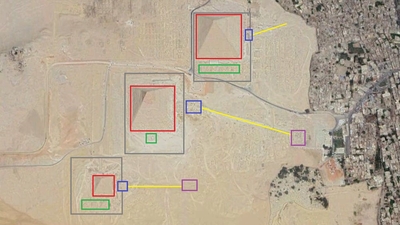
Khafra funeral complex
In red, you have the graves, in gray, the wall of enclosure, in green, the annexed pyramids, in blue the high temples, in violet the low temples and in yellow the pavements covered.
This pattern is fairly classic, it stems from spiritual beliefs and is the result of the evolutions of the first three dynasties. It will continue with the following dynasties, since the burials of the 5th and 6th dynasties are made according to the same scheme, but with smaller pyramids (and unfortunately, less well preserved)
At the edge of the Khufu pyramid, archaeologists have relatively recently discovered two large pits on the ground along the east face. They are on both sides of the temple high. One of the two contained a magnificent wooden funeral barrel (essentially). It was destined to carry the soul of the deceased to the hereafter. Nowadays it is exhibited in a museum dedicated to it, at the foot of the pyramid. The upper temple of Khafra has several pits, but none contain such a boat.
Detail of a funeral complex
A funeral complex of pharaoh of the old empire consists of the various elements seen above.
Pyramids
The pyramid is the most visible, the most impressive element. It is the culmination of a Evolution royal tombs primitive since the 1st dynasty. The first kings having been buried in mastabas, these evolved towards one-storey mastabas, then stacking the stages with step pyramids (3rd Dynasty). Finally the Pharaohs of the IVth Dynasty made smooth faces to their pyramids, obtaining the culmination of the evolution. Indeed, the following dynasties remained with smooth-faced pyramids, but of a more modest size.
If the pyramids are heiresses of the first mastabas, it can also be seen inside the building. Indeed, the mastabas were rooms dug from a well leading to an underground room, the vault. The pyramids partially resume this arrangement with an underground corridor leading to a chamber containing the sarcophagus. The arrangements vary from pyramid to pyramid, the complexity of the interior is also variable, but there is always this internal layout with corridors and an underground chamber.
The high temples
Each pyramid has its temple high. It is a large stone building usually centered on a room, with outlying rooms and a corridor connecting the covered pavement. The function of high and low temples are not well known. It seems that the ritual of preparing the body, after the death of Pharaoh, was done in the temple high, but it is without insurance.
Pavement
The roadway is a rather strange element. It is a long covered corridor, all in stone, connecting the two temples. The pavement of the Khafra complex is the best preserved of the three by far. It is fully paved. That of Menkaure is also complete, but much more degraded. That of Khufu offers only the departure, the lower temple of this complex no longer exists.
The low temple
The lower temple of each funeral complex is surprising: It was a port. If the building had a religious function of course, it is because according to Egyptian spirituality the soul of the deceased is supposed to leave this world in a boat, hence the causeway leading to the lower temple.
But there is no river or sea in Giza?
That's right! But this has not always been the case. At the time of the Fourth Dynasty, towards the end of the twenty-first century BC, the landscape was very different from what we know now. We were here in the savanna zone, and the Nile had an arm that passed the border of the Giza plateau. We can imagine that the water arrived at the lower temple of each complex. And besides, the different orientation of each roadway proves to us that they reached a precise point, perfectly decided. If the water was only symbolic, one imagines that the old ones would have aligned their roadways just as they aligned the pyramids.
The annex pyramids
Each of the pyramids of Giza have their pyramids annexes, much smaller. These are the Queen's pyramids for the most part, but some have no assigned function, we do not know exactly what they were used for. Still, they are perfectly aligned with their pyramids, and form the first row of cemeteries around.
Cemeteries
Each pyramid had at least one cemetery. The Khufu complex had two, one in the East, the other in the West, those are the largest. The idea was that the pharaoh have near him his relatives. The closer a deceased person's grave was to the pyramid, the more important the owner was. Moreover, the size of the tomb does not deceive, the most imposing are close to the wall. The pyramid of Khufu has a curiosity about it. It was bordered by 12 mastabas of rather large size, but they were reunited two by two, except four. So, nowadays, we only have eight.
The wall
There is not much to say about the walls of each necropolis, except that they were to be used to isolate Pharaoh from the rest of the necropolis, to protect him so that his soul could pass in clutter in the high temple, then the pavement before being able to embark at the low temple towards the beyond.
The great Sphinx
The Sphinx is a monumental sculpture dating from the middle of the XXVI century BC. It is attributed to Pharaoh Khafra, author of the second pyramid whose lower temple adjoins the temple of Shinx.
Because it is a fact: The Sphinx is not only a statue, it is also a set composed of the statue itself and a temple that has analogies with that of Khafra. The question of the representation of the Sphinx has long been questioned. Is the person with the lion's body and the human face Khéops or Khafra?
The answer is not obvious, and even nowadays scientists have diverging opinions, even if there is a large part of them who lean towards Khafra. Those in favor of Khufu highlight the absence of a false beard, an attribute of the pharaoh that appears only under Khefphren. But they object that this attribute being recent, it is not inconceivable that it appeared only after the realization of the Sphinx, especially as to sculpt this false beard would have been an incredible tour de force.
Learn more about the Sphinx.
The village of workers
It is a fairly recent discovery that led archaeologists to look into an area southeast of the pyramids of Mycerin and Khafra. They discovered the village that was built to house the many workers who worked on the sites. This village appeared during the construction of the pyramid of Khafra, and it was discovered that the workers were organized like any other community in the world. Apart from the workers themselves, there are bakers, carpenters, doctors, and all other professions necessary for community life. It was also discovered that they were well fed, and especially free: This point definitely twisted the belief that the pyramids were built by slaves, which is simply not true. They have been done by free and salaried men.






